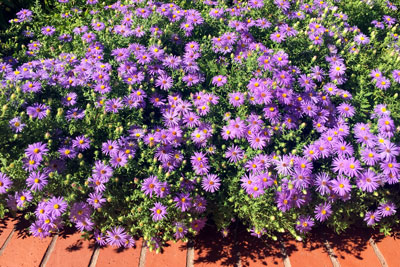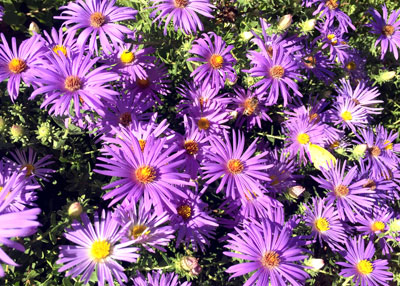A Fall Favorite for Decades
There was a time when the only place you’d see this plant in gardens would be around older homes, where somebody’s grandma had planted it many years earlier. And you never saw it in nurseries.

Photo: A bed of fall asters in cheerful bloom attracts lots of attention this time of the year.
But now fall aster has hit the big time and you see this plant far more often. It’s even been polished up and given a new name. What used to be Aster oblongifolius is now the called by Symphyotrichum oblongifolium. My contention is that plant taxonomists are just playing games with our minds. But we have to play along. If you want to research it, that’s the name you’ll want to use.
There are a couple of curious things about this handsome little aster. First, asters in general don’t like Texas at all. We’re just too hot to suit them. Which brings in the second odd fact: this is a native wildflower in Texas, growing as far west as the Hill Country. That’s why it handles our growing conditions. Fact is, it’s native to most of the states east of the Rockies. It handles just about anything!

Photo: Butterflies, bees and guys with cameras are attracted to fall asters in bloom. Click image for larger view.
Tips to growing fall asters successfully…
• Set out potted transplants whenever you find them in nurseries.
• If you’re digging and dividing established plants, do so in late winter/very early spring.
• Morning sun, shade from hot afternoon sun.
• Moist, highly organic planting soil.
• Space plants 15 to 18 inches apart.
• Fertilize with high-nitrogen food, half or more of that nitrogen in slow-release form (same fertilizer you apply to your lawn). Apply on 6-week intervals spring and summer.
• Fall aster plants tend to get somewhat top-heavy as the season progresses. You can keep your plants compact by pinching out their growing tips one time in mid-May.
• Once plants finish blooming and stems have started to die down you can trim them back to within a couple of inches of the ground. New shoots will sprout out in the spring.
